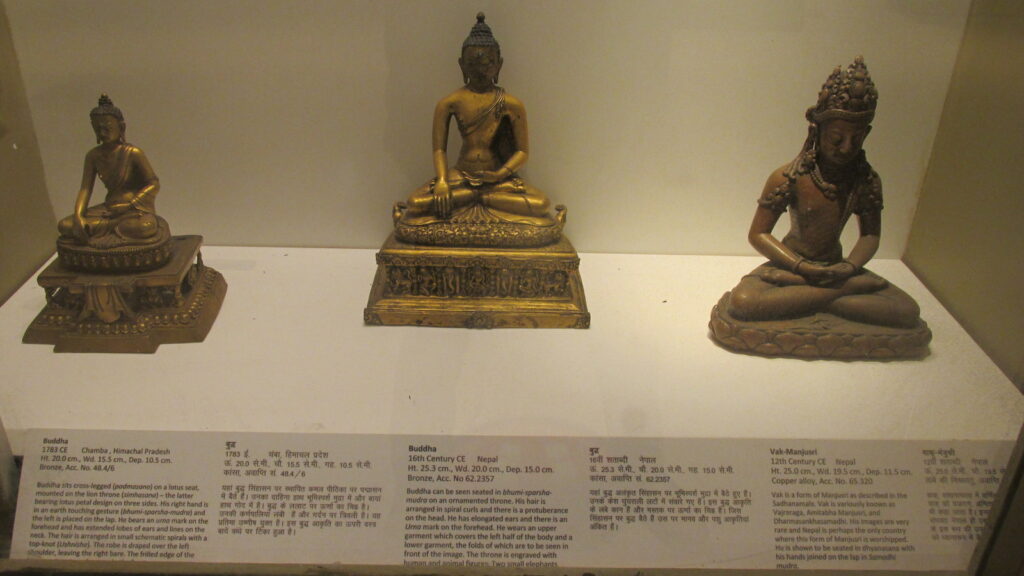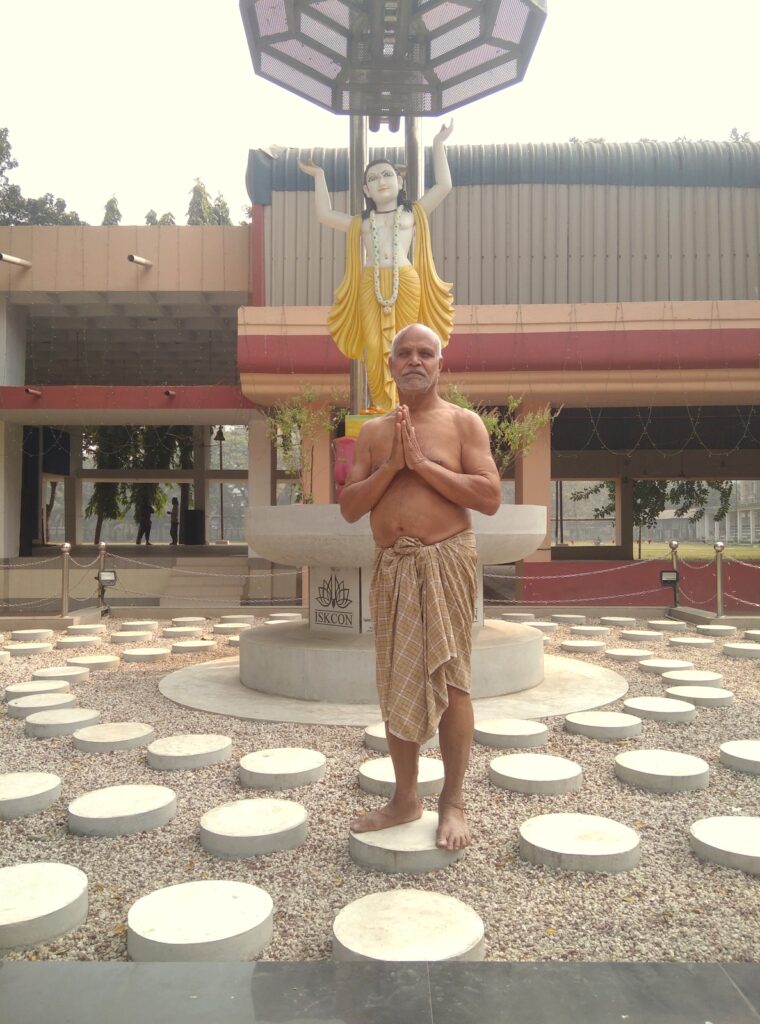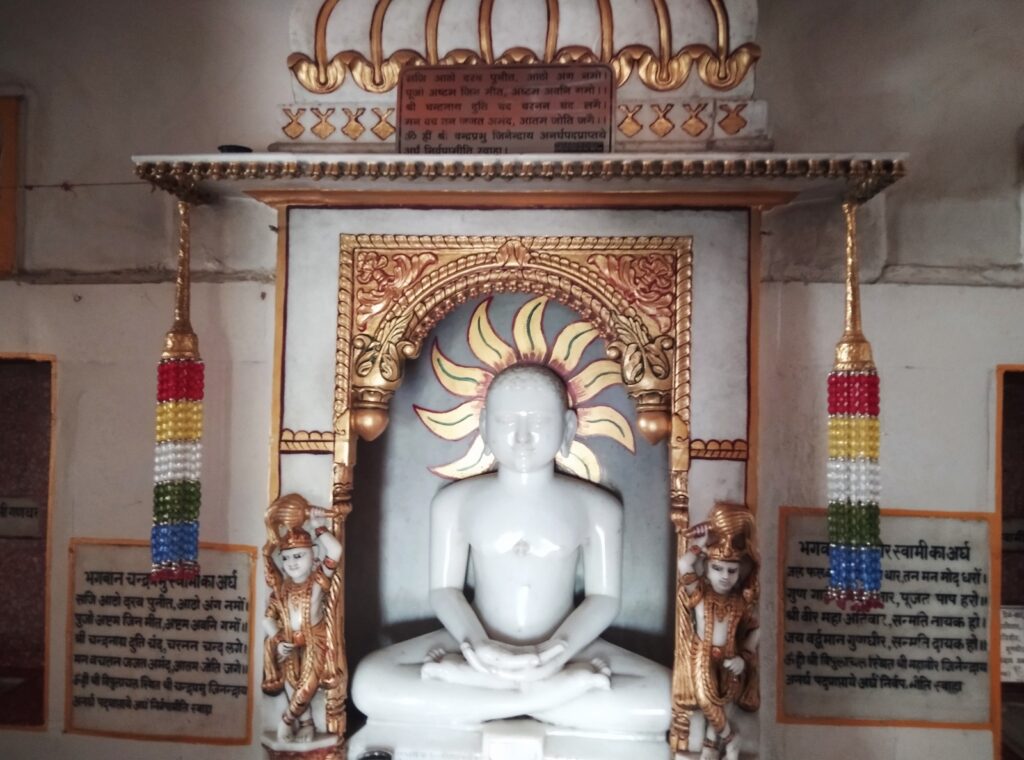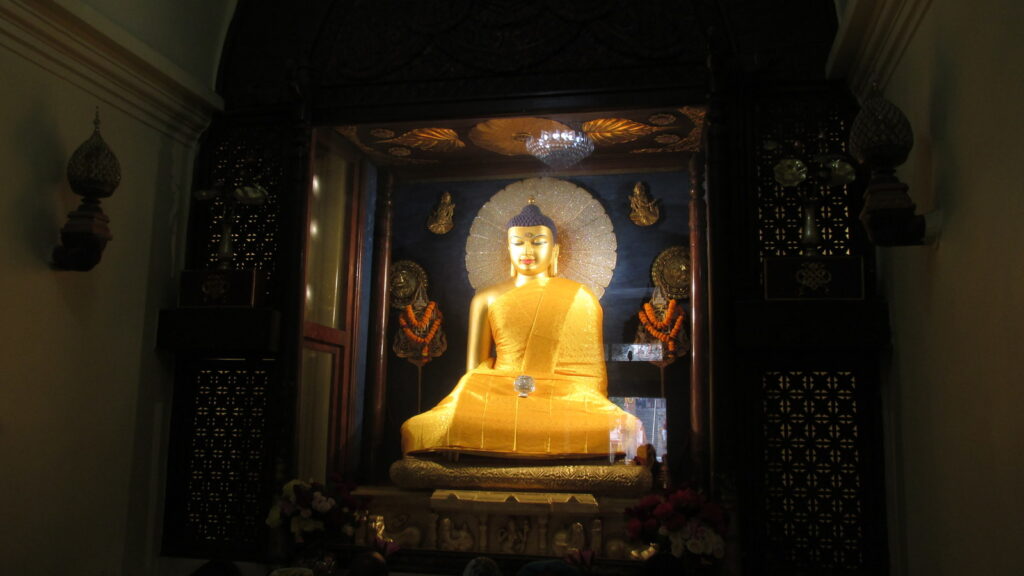Introduction
To start a formal discussion on Indian Philosophical thoughts, one must to go back to the roots and origin of Indus Valley civilization. Indian way of actual social life should not be viewed separately from the religious practices. Therefore, Source of Indian philosophical thoughts cannot be separated from Indian religious practices. When we refer to “Indian Religion” we also keep in mind of Vedic literature. In this regard Geoffrey Samuel noted that, – “The most usual starting point for a history of Indic religions is the religion of the Indus Valley cultural tradition in what is now Pakistan and Northern-West India, best known from the extensive remains of the early urban societies at Mohenjo-Daro, Harappa and elsewhere.” (1)
Except some Non-Vedic rationalist systems like Carvaka Philosophy, Buddhist Philosophy and Jaina Philosophy, source of Indian philosophical thoughts mostly derived from Vedic literature. It is safe to say that, even Non-Vedic Indian Philosophical thoughts also took some necessary elements from Vedic concepts and hermeneutics. In this regard we can connote R. C. Majumder, one of the greatest Indian historian, who noted – “Before proceeding with the history of the Aryans in India, it will be well to give a short account of the Vedas, their sacred literature, as practically everything we know about them is derived from this source alone. But even apart from this, there are other reasons why we should give a prominent place to the Vedas. They form the oldest literary works not only of the Indo-Aryans, but of the entire Aryan group known as the Indo-Germans, and as such, occupy a very distinguished place in the history of world-literature.” (2)
Including Vedic system of religious practices and rituals, almost most of the religious traditions of India have their own way of religious practices. Amongst these religious traditions and practices, except Carvaka, the materialistic one, all the rest Indian religions propose to set a final goal for human being, that is ‘Moksa’ or ‘Nirbana’ which is considered to be similar with the meaning of emancipation, liberation or salvation. To achieve this supreme attainment, enlightenment is needed. In this writings we will discuss the concept of ‘Enlightenment’ in different of Indian Philosophical schools.

Indian Schools of Philosophical Thoughts:
Indian philosophical system can be categorized into two main system. These are-
1. Astika Darshanas (Orthodox): Philosophical thoughts derived and developed from Vedic system and Vedic rituals.
2. Nastika Darshanas (Heterodox): Philosophical views that tend to reject the Vedic authority, rituals and Bhramanic supremacy.
Indian Philosophical Schools
| 1. Astika Darshana (Orthodox) | ||
| Founder | System | Text |
| Brahaspati | Carvakadarshana | Brahaspatyasutra |
| Mahavira | Jainadarshana | Agama sahitya |
| Siddhartha Gautama | Bauddhadarshana | Tripitaka (Pali Canon) |
| 2. Nastika Darshana (Heterodox) | ||
| Founder | System | Text |
| Kapila | Samkhyadarsana | Samkhya-sutra |
| Patanjali | Yogadarshana | Yoga-Sutra |
| Kanada | Vaisesikadarshana | Vaisesika-sutra |
| Akkhaipada Gautama | Nyayadarshana | Nyaya-sutra |
| Jaimini | Mimamsadarshana | Mimamsa-sutra |
| Badarayana | Vedantadarshana | Vedanta-sutra |
Enlightenment in Different Indian Philosophical School:
To explain epistemological approaches, some scholar distinct Indian Philosophical thoughts in two major streams. Naturalistic and Spiritualistic. Some also categorize all the Indian philosophical thoughts in Realistic views and Idealistic views. Realistic systems explain mostly the external world and Idealistic systems like Buddhism emphasizes on universal phenomena from the corner of our mind and ideas. Vaisesika and Jaina school developed naturalistic views and the some of the rest, like Buddhism, Vedanta are spiritualistic. Sankhya and Yoga philosophical approach are of realistic. However, amongst all the nine Indian philosophical schools, in its way to world view, the most unique one is Carvaka darshana of Brahaspati. Carvaka view is totally materialistic. It doesn’t include an idea of ultimate goal for human life. Therefore no concept of enlightenment and liberation is there in Carvaka philosophy. In Carvaka there is no after life, no sin and no merit. Consequently, there is no such matter like Moksa or liberation. Nonetheless to say, weather accepting or rejecting the Vedic ideas, accept the Carvaka, all the other Indian philosophical schools keep a definite worldview as well as provide a concept of Moksa or Liberation. In the following, shortly we will try to discuss on the concept of earning liberation in different Indian philosophical schools and how enlightenment process is possible as explained in these schools.
Upanishadic Emancipation (Mukti):

Vedic wisdoms are found in Upanishad. Regarding cosmic existence of matters within the universality, Upanishadic views is that, self or the atman is Brahman. So, the cause is effect and the effect is cause. With efficient cause, Brahman is creating Brahma. Brahman is boundless, it has no birth, no death. Brahman is beyond visibility, even beyond imagination. Whatever the elements exist in the cosmic, the same are in our body too. Everything in the universe is in an ultimate cosmic harmony. There is an eternal cosmic connection between individual soul and the universe. Due to maya or illusion within ourselves we don’t realize that ultimate truth of this universe. We are the universe and the universe is in within us. Once maya is separated from the soul, Mukti or Liberation happens. When we be liberated from maya, we know who is God, how is God, where is God and we ourselves become a part of God. Prominent Indian philosopher Surendranath Dasgupta opined- “Emancipation thus is not a new acquisition, product, an effect, or result of any action, but it always exist as the Truth of our nature. We are always emancipated and always free”. Further, he mentioned, “Emancipation is the natural and only goal of man simply because it represents the true nature and essence of man. It is the realization of our own nature that called emancipation.” (3)
Moksa in Sankhya Philosophy:
Sage Kapila is the founder of Sankhya philosophy. Amongst the nine Indian Philosophical Schools, Sankhya is considered to be the ancient one in the eyes of many scholars. Therefore, in terms of status of antiquity, it is Sankhya School of Indian thoughts that receives the most respect. Sankhya is one of the rationalist school in the development of Indian philosophical thoughts. “Sankhya was the first philosophic system produced in India or anywhere else, founded on no other authority than reason and experiences.” (4)
Sankhya considers that the Veda is the supreme source of all the knowledge in this universe. In Sankhya both bondage and liberation are phenomenal. To attain Moksa complete cessation of suffering is needed. Sankhya school generally considers the accounts of experiences that we experiences in different cosmic forms. In terms of connection between the experiencer and the experiences, Purusha and Prakriti as subject and object of a ‘universal experiences’ or a ‘cosmic matter’ are the main components of Sankhya philosophy. Purusha as consciousness getting in touch with prakriti manifest the cosmic experiences in types of cosmic forms. Their existence is distinct, yet same.
Sankhya suggest that, there must be an absolute and primitive cause behind all the matters, because, effect is already present in the cause. In other words, prakriti is the first uncaused cause of all the cause that come into existence upon a combined operation with purusha. In some certain forms prakriti is not manifested. When purusha and prakriti comes closer to each-others proximity than cosmic matters come into existential shape the way they be visible or sensible. Prakriti has 3 gunas. Nothing of this material world is free from gunas. Almost all the matters and things are consist of these 3 gunas of prakriti, those are- 1. Satva (positivity) 2. Rajas (Action) and 3. Tamas (Negativity/Laziness).

Nirbana in Jaina Philosophy:
Mahavira who was contemporary to Gataum Buddha is the founder of Jaina religion.
Five rightful conducts, 1. Ahimsa (non-violence) 2. Satya (truthfulness) 3. Asteyam (not taking the ungiven) 4. Brahmacaryam (celibacy) and Aparigraha (Detachments from things) are the key to cut-off all the bondages of Karma what throw us within the endless cycles of birth and death. To achieve liberation rightful conducts are prior, yet right faith and knowledge also needed. Right faith, knowledge, and conduct are necessary for liberation. If one of the three is missing, there would be no moksa. The perfected soul, according to Jainism, becomes a god. (5)
Buddhist Enlightenment:
“The salvation, the Buddhist seeks cannot be accurately described either as a salvation from hell, or as a salvation from sin”. (6)
To understand Buddhist concept of Liberation one should be well understood of the Four Noble Truth. In Mahasatipatthana Sutta Buddha clarified “Here, Monks, a monk understands properly as it is, ‘This is suffering”; he understands properly as it is, ‘This is the arising of suffering’; he understands properly as it is, ‘This is the cessation of suffering’; he understand properly as it is, ‘This is the path leading to the cessation of suffering.”
- (Mahasatipattana Sutta, DN 22, Translated by S. N Goennka, Vipassana Reasearch Institute)
Buddhist views is that, there are three characteristic of all the phenomenal existence. These are Dukkha(suffering), Anicca(Impermanent), Anatta(non-self). Due to attachments suffering causes as the sentient beings take the impermanent as permanent and be attached to it out of desire and it leads them to sufferings and an endless cycles of birth and death. For cessations of sufferings one must follow the Eightfold Noble Paths.
In his very first sermon, in the Dhammacakkappavattana Sutta Buddha uttered,-
“And what is the middle way realized by the Tathagata that — producing vision, producing knowledge — leads to calm, to direct knowledge, to self-awakening, to Unbinding? Precisely this Noble Eightfold Path: right view, right resolve, right speech, right action, right livelihood, right effort, right mindfulness, right concentration. This is the middle way realized by the Tathagata that — producing vision, producing knowledge — leads to calm, to direct knowledge, to self-awakening, to Unbinding.
- (Dhammacakkappavattana Sutta, Sutta Nikaya, Translated by Thanissaro Bhikku, Access to Insight, 2013)

Yogic Union:
Yoga literally means to unite. Yoga is Samadhi, meditation. By doing yoga one subdue own self and then a new sense emergences within oneself and one be able to unite the individual soul with the ultimate soul. Attachments create the endless cyclic existence. Purpose of yoga is to control the five senses towards liberating the soul from all the attachments and bondages and therefore to unite the individual soul with the ultimate soul. A large number of influential text of Bhagvadgita emphasizes on Sankhya and Yoga. Tough Sankhya and Yoga are two separate schools in today’s Inidan philosophy, yet they profoundly connected with each other. V 4. 5 of Gita indicates the same. In this regard, we can connotes a line from one of the most recognized Indian philosopher Surendranath Dasgupta, who commented- “Fools only think Samkhya and yoga to be different, not so wise men.” (7)
It is to say Sankhya developed the aspects of theory whereas Yoga developed the necessity of taking actions in practical aspirations. Yoga is completely practical actions.
Our internal organs are combination of Sattwa, Rajas and Tamas. That’s why, yoga sutra of Patanjali reads,- “Yogas Citta-Vritti-Nirodhah”which means yoga is to still the patterning of consciousness. Practicing yoga is an active process. By doing so one can subdue oneself and be enlightened, therefore be unified with God. The yoga of action consist of austerity, study, and submission to God.(8)
Isvara and salvation in Nyaya-Vaisesika:
Rational Indian philosophical schools like Sankhya, Buddhism and Jaina views deny the existence of God or a concept of creator (Isvara). In this regard, Nyaya produce arguments to prove the existence of Isvara. In doing so Nyaya brings an inference of samanyata-drsta. Nyaya and Vaaisesika argues that Isvara knows all the things and matters and their purpose of this eternal universe. Thus, Isvara is omniscient. Destruction of attachments leads to the salvation. “The state of mukti according to Nyaya-Vaisesika is neither a state of pure knowledge nor of bliss but a state of perfect qualitilessness, in which the self remains in itself in its own purity.” (9)
Self, Karma and Liberation in Mimamsa:
Mimamsa considers the Vedas as revealed and accept the existence of self but does not accept the concept of existence of creator or destroyer God. Just as Nyaya-Vaisesikha school Mimamsa also distincts the self from the body, sense and the mind. In this school the soul is eternal and infinite substance. The school emphasizes on conducting moral duties (Dharma) properly. In Mimamsa, three type of karmas (actions) are there, 1. Nitya (obligatory) 2. Kamya (optional) 3. Prohibited. Liberation is possible to be gained by performing Dharma and stopping the regeneration of optional and prohibitory Karmas.
Conclusion:
India has a long philosophical traditions. Most of the Indian philosophical schools overwhelmingly emphasizes on the moral conducts. These philosophical systems developed their own ideas, epistemological approach and hermeneutics in their own way, and played an interconnected role to each other. Diversity of thoughts and ideas in Indian philosophical systems also paved the way to later evolution of democratic values in the society and a harmony between human and nature. If one goes through deep inquiries towards the Indian philosophical systems he may find a vast ocean and a heavenly realm, full of valuable gems.
References:
- Samuel, Geoffrey, THE ORIGINS OF YOGA AND TANTRA, INDIC RELIGIONS TO THE THIRTEENTH CENTURY, First South Asian Edition 2009, (Delhi: Cambridge University Press), p.5.
- Majumder, Ramesh. Chandra, ANCIENT INDIA (Delhi: Motilal Banarasidass, 2018), p.33.
- Dasgupta, Surendranath, A History of Indian Philosophy, Vol. 1, (Cambridge Cambridge University Press, 1969), p.58.
- Hare, William Loftus, Mysticism of East and West, Studies in Mystical and Moral Philosophy, (London: Butler and Tanner, 1923) p.96.
- GUPTA BINA, AN INTRODUCTION TO INDIAN PHILOSOPHY, PERSPECTIVES ON REALITY, KNOWLEDGE, AND FREEDOM (NewYork: Routledge, 2012), p.76.
- Davids, Rhys, T. W., Buddhism: Its History and Literature. Edition 2021 (Delhi: Kaberi Books, 2021), p.105.
- Dasgupta, Surendranath, A History of Indian Philosophy, Vol.2, (Cambridge Cambridge University Press, 1969)
- Patanjali Yoga Sutra
- Dasgupta, Surendranath, A History of Indian Philosophy, Vol. 1, (Cambridge Cambridge University Press, 1969), p.365.
